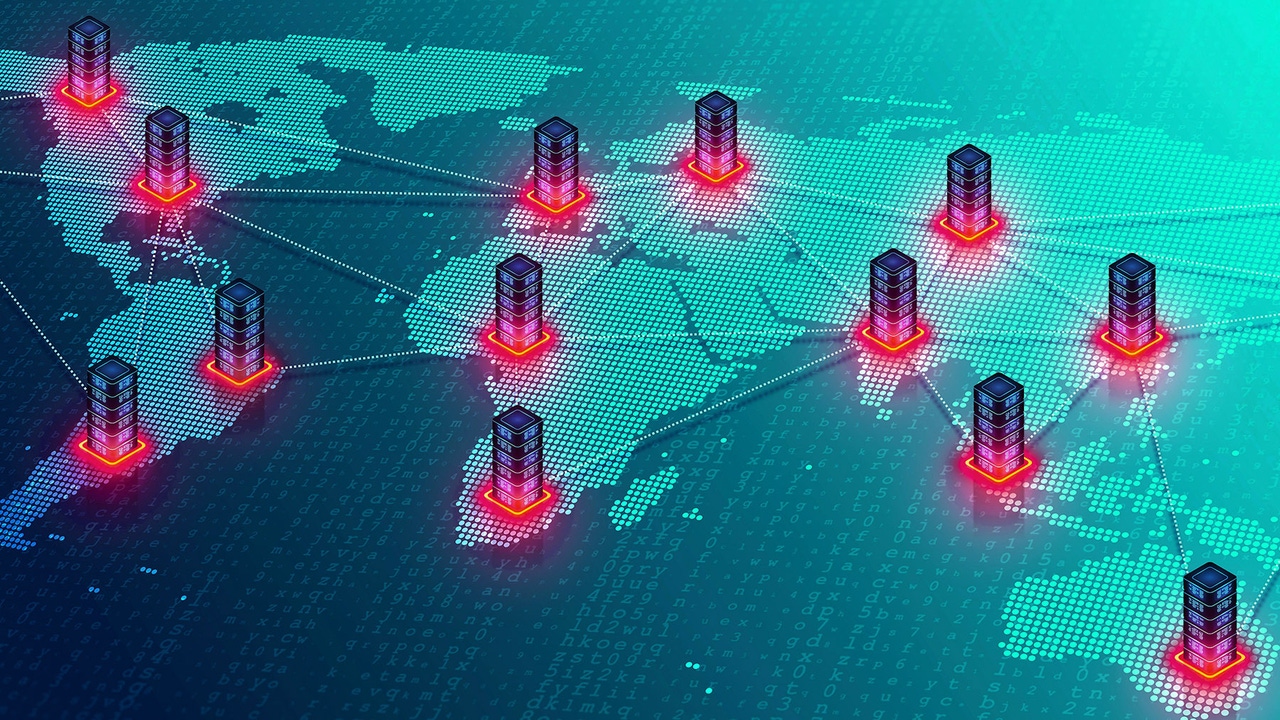
Insight and analysis on the data center space from industry thought leaders.
Tracking the Growth of the Edge Colocation Data Center MarketTracking the Growth of the Edge Colocation Data Center Market
Edge colocation data centers combine the shared resources and expertise of colocation with the performance benefits of edge computing, writes Aashi Mishra.
July 15, 2024

As technology progresses and applications grow in complexity, a new development is on the rise: edge colocation data centers.
In today’s digital age, firms heavily depend on reliable and efficient data storage and processing systems. According to reports, data storage requirements are growing by 40% every year.
Traditionally, these organizations have located their IT infrastructure within data centers – large, central sites outfitted with the necessary power, cooling, and security systems to maintain server and network functionality.
As the digital environment continues to expand, edge colocation data centers may play a pivotal role in supporting enterprises of varying scales. These establishments leverage the shared resources and expertise of colocation, along with the reduced latency and enhanced performance benefits of edge computing.
Let us try to understand in detail what edge colocation data centers are.
Understanding Edge Colocation Data Centers
Colocation data centers provide businesses with the option to lease space and resources in a data center instead of operating their own facilities. This arrangement enables companies to allocate resources more efficiently and concentrate on their primary business functions.
Edge data centers, meanwhile, refer to smaller facilities positioned closer to the source of data generation. By itself, the edge data center industry is expected to reach around $14 billion by the end of 2024. This decentralized model minimizes latency, or processing delay, by reducing the journey distance for data.
The integration of these two approaches yields a fresh solution: edge colocation data centers.
What Is Edge Colocation?
Edge colocation establishments leverage the shared resources and expertise of colocation, along with the reduced latency and enhanced performance benefits of edge computing.
As the digital environment continues to expand, edge colocation data centers are set to play a pivotal role in supporting enterprises of varying scales.
The Edge Colocation Market Overview
The edge colocation data center market shows strong promise, growing at a CAGR of 20%, which puts its projected global valuation of more than $36 billion by 2036.
North America is the leader in edge colocation data center services and is expected to hold a share of around 46% of the market by the end of 2036. Asia-Pacific is a close second to the North American region in terms of dominance over the edge colocation data center market.
The main reasons for the sustained growth of this industry include the rising adoption of new technologies, demand for high-capacity networks with low latency, the need for scalability and flexibility in data solutions, and many more.
Adoption of New Technologies
The proliferation of IoT, cloud computing, and big data analytics necessitates efficient and affordable data processing solutions. Edge colocation data centers offer a cost-effective way for companies to handle this growing data burden without building and maintaining their own infrastructure.
Reduced Latency
Certain applications, like autonomous vehicles and real-time data streaming, require ultra-low latency for optimal performance. Traditional data centers, often located far from users, can introduce delays. Edge colocation data centers, situated closer to users, can significantly reduce latency, driving the growth of this industry.
Cost Efficiency
Cost efficiency is another critical driver of the industry. Building and maintaining a data center is a significant expense. Colocation offers a shared environment with economies of scale, reducing costs for security, power, and cooling for businesses leveraging these services. The confluence of these factors, along with many others, indicates that this industry will keep growing and will offer investors and businesses lucrative investment opportunities.
Trends Shaping the Edge Colocation Industry
The edge colocation data center space is rapidly evolving, with several key trends shaping its future. Let us take a look at some of the most prominent trends in the edge colocation data center sector:
Cloud Technologies
Around 60% of business-related data is stored in the cloud, and around 48% of businesses store some of their most vital information in cloud-based storage. The rapid advancement in cloud technologies and the ever-increasing data demands of modern businesses have positioned hyperscale data center colocation facilities as critical infrastructure components in the global digital economy.
The surge in cloud services and the digital shift have propelled the emergence of hyperscale data center colocation hubs. These vast facilities meet the growing need for scalable and robust computing capacities.
Hybrid and Multi-Cloud Adoption
Enterprises are progressively embracing hybrid and multi-cloud strategies to refine their IT setups. A survey revealed that around 72% organizations opt for hybrid cloud approaches.
Colocation hubs play a pivotal role in this context, offering connectivity and versatility for companies.
By facilitating seamless integration of hybrid and multi-cloud systems, these centers not only optimize IT infrastructure but also enable organizations to leverage the full potential of cloud computing. This, in turn, enhances operational efficiency, agility, and scalability – attributes that are indispensable in today's fast-paced business environment.
Managed Services and Other Offerings
Numerous colocation providers are broadening their offerings beyond mere infrastructure. They now frequently include managed security services and extensive IT support, becoming comprehensive solutions for clients.
Furthermore, the expansion of service portfolios by colocation providers signifies a shift towards a more holistic approach to catering to organizational IT needs. By augmenting their infrastructure offerings with managed security and comprehensive IT support, these providers are positioning themselves as indispensable partners for businesses navigating the complex digital landscape.
Sustainability and Green Data Centers
The issue of sustainability is becoming increasingly central in this sector, as firms seek to lessen their environmental footprint. Data centers that use renewable energy sources to operate are becoming more popular, presenting environmentally friendly options. The adoption of green data centers underscores a commitment to sustainability that resonates with the values of both businesses and consumers, thereby reinforcing the role of technology as a force for good in addressing global challenges.
As such, the rise of hyperscale data center colocation facilities is not merely a response to the current demands of the digital economy but a forward-looking adaptation that anticipates the future needs and challenges of technological advancement, sustainability, and global connectivity.
Role of AI and ML in Colocation Edge Data Centers
The evolving influence of AI and machine learning (ML) within edge data centers designed for colocation is profoundly reshaping the industry. The global AI market is reported to be over $196 billion in valuation with an impressive growth rate of 38.1%. These cutting-edge technologies are at the forefront, driving both innovation and expansion. Here’s an in-depth look at the pivotal roles AI and ML play in revolutionizing edge colocation data centers.
Optimized Resource Management: Through the deployment of AI and ML algorithms, there's a sophisticated analysis of various data, including power consumption, cooling requirements, and server workloads. This facilitates a real-time optimization of resources, which in turn, curtails energy expenditures and augments efficient operation throughout the edge colocation infrastructure.
Efficiency in Operations: The automation of routine tasks, such as workload distribution and server setup via AI, liberates human resources to focus on more strategic endeavors. This contributes to the more streamlined and effective management of edge colocation data centers. AI and ML techniques are increasingly being harnessed to refine data center solutions. Colocation providers are turning to AI and ML to innovate in areas like connectivity optimization, space utilization, power and cooling systems, security protocols, compliance adherence, maintenance routines, customer assistance, and scalability within colocation settings.
Dynamic Allocation of Resources: AI’s capability to dynamically assign resources in response to real-time demands ensures that critical applications have access to the required processing power and storage space, thus optimizing performance for all tenants within the edge colocation facility.
Edge Computing: AI-driven algorithms often necessitate swift data processing close to the data source to diminish latency, particularly for applications such as autonomous vehicles, IoT devices, and instant analytics. Edge data centers, located nearer to the end users, are equipped to provide the necessary low-latency processing for these AI applications.
Hardware Developments: In response to AI's requirements, colocation providers are evolving by offering specialized hardware solutions, like high-density racks that can support up to 70 kW per rack, and advanced liquid cooling systems.
AI and ML are fundamentally transforming the edge colocation data center market, leading to increased demands for power, enhanced efficiency, and a surge in demand for specialized infrastructure and services.
As AI technology continues to mature, the significance of edge colocation data centers in supporting these advancements will undoubtedly grow more integral.
Edge Colocation Data Centers: Future Outlook
The edge colocation data center field is accelerating, pushed by the rising need for on-the-spot data handling. This growth is spurred by the boom in IoT devices, AI, and tech like self-driving cars, all of which need the quick-response features edge computing brings.
Research Nester foresees edge colocation data centers emerging nearer to users, while eco-friendliness stays a priority through green energy, smart cooling, and AI-driven resource control.
Service models will shift to include not just base infrastructure but also managed security, IT aid, and edge-as-a-service options. Moves towards common standards and stronger security measures are coming to ensure smooth integration and fend off an expanding threat landscape. Moreover, AI and machine learning will merge even deeper, fine-tuning resource use, forecasting upkeep, and boosting overall efficiency in operations. The trajectory for edge colocation data centers is filled with innovations, ready to cater to our ever-more data-centric society.
Aashi Mishra is a research writer at Research Nester. An experienced research writer, strategist, and marketer with a demonstrated history of research in a myriad of industries, Aashi loves to distill complex industrial terminologies into simpler terms.
About the Author
You May Also Like









